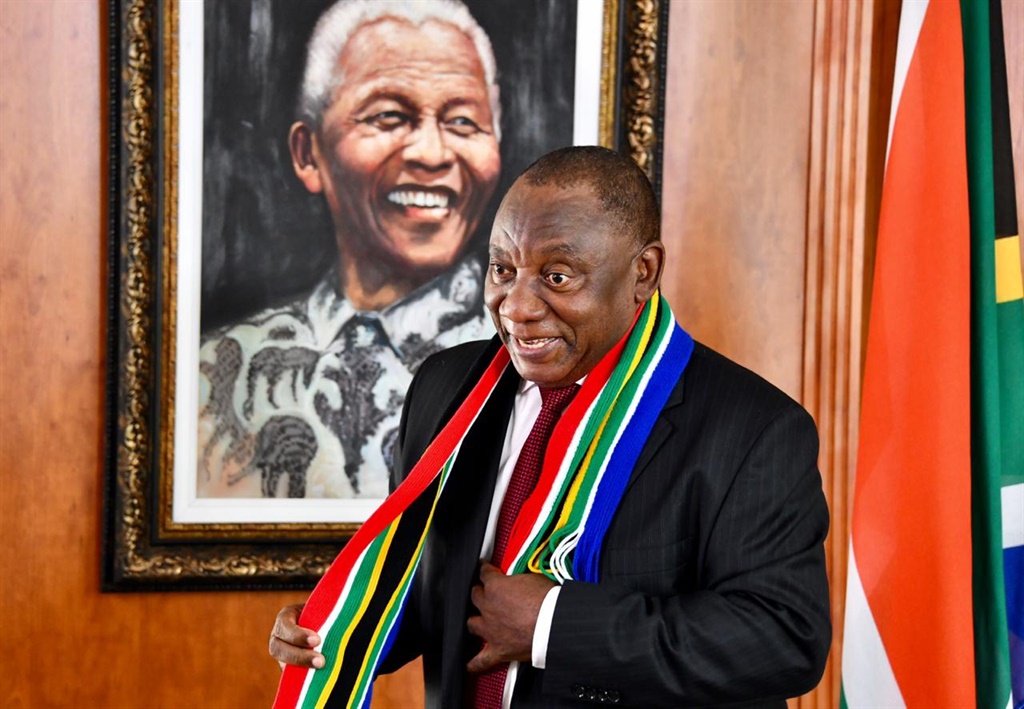
President Cyril Ramaphosa. (GCIS)
Multimedia · User Galleries · News in Pictures Send us your pictures · Send us your stories

President Cyril Ramaphosa. (GCIS)
Multimedia · User Galleries · News in Pictures Send us your pictures · Send us your stories
So, what we are seeing currently is that in the multiple, ever-changing and complex Covid-19 situations across the globe, governments are adapting their modes of working, writes Tebogo Ngoma.
The Covid-19 global moment is deeply disruptive.
It has disrupted and continues to undo entrenched modes of work.
This includes the ways that health researchers, humanitarian workers, activists and policymakers approach their work. And, interestingly the ways that governments and their officials do their work.
The scale, nature and urgency of the Covid-19 pandemic is forcing many governments to rely on new and ever-changing data to make sense of the disease and the decisions that they must urgently take.
As the Covid-19 pandemic unfolds, many government officials and professionals are maximising their use of evidence as the strategy for curtailing increased Covid-19 infections.
The South has quickly learned from the East and the North.
Having learnt from the Chinese, Spanish and Italian experiences; Lesotho, Zimbabwe and South Africa instituted national lockdowns that restrict the movement and interaction of citizens to contain Covid-19 infections.
Online and televised national Covid-19 briefings are a staple or the "new normal".
This is the stage where transformational leaders display their prowess in mobilising evidence for decision making and Covid-19 risk analysis and response.
In watching these Covid-19 briefings, it has been fascinating to see the distinct but similar styles of South African president Cyril Ramaphosa, and New York’s governor Andrew Cuomo.
Cuomo’s daily televised Covid-19 briefings are an excellent example. He uses hard numbers as evidence to craft a compelling narrative that is coherent and inspires directed action, particularly in the deep situational crises erupted by Covid.
His briefings begin with an outline of seemingly simple key indicators that show New York’s Covid-19 situation. Using simple graphs, he informs New Yorkers of the city’s total infection rate, total death rate and total hospitalisations.
This helps to distill complex calculations already made by scientists and other professionals.
This is useful because it facilitates clarity and ease of understanding for citizens and non-experts alike.
After the detailing of the hard facts, Cuomo performatively switches his style.
He dexterously moves from being an instructive lecturer, to a concerned and caring father or father-figure.
Using a conversational rather than an instructive tone, he takes citizens into his confidence. He uses storytelling techniques, weaving in powerful symbols and anecdotes from his life to display empathy and vulnerability.
He is calm, but emphatic. His language is plain and accessible.
In his storytelling, he gives details of logistical and operational issues that must be addressed.
He explains the ways in which one decision affects the other and what it means for responding to Covid-19.
He inspires New Yorkers by repeating his mantra “New York Tough- being smart, being disciplined, being unified, and being loving”.
Subsequent messaging through Facebook and Twitter, etc. reinforces New Yorkers’ "new normal" of daily social but electronic based interactions.
Similarly, President Cyril Ramaphosa’s briefings and response to the South African Covid-19 situation have also been applauded. South Africans believe that the President is doing a good job.
This was revealed in a recent survey by the University of Johannesburg’s Centre for Social Change that said that 73% believe that he is doing a good job.
Whilst President Ramaphosa does not do frequent briefings, when he addresses the nation, he is calm, measured and decisive in his delivery of the facts.
Filling our television screens with his broad shoulders he explains what the problem is and in his posture, we find solace.
He emphasizes that this is a well-considered analysis that’s informed by scientists, medical/doctors.
It communicates that he has accessed the best available knowledge, he has listened and has applied this knowledge. Combining the hard facts, he then deftly indicates the need for drastic action and the consequences of inaction.
In the final act, he is compassionate and decisive.
He emphasizes the deep challenges of poverty and inequality that we already face and the drastic action required to prevent the country from extreme devastation.
So, what we are seeing currently is that in the multiple, ever-changing and complex Covid-19 situations across the globe, governments are adapting their modes of working. Government and the science community are creating an agile and symbiotic loop of decision making.
With all this, and having built this trust and confidence, both in the case of New York and South Africa, longer term decisions will need to be made.
These will have to be communicated in the same evidence-based way and with the trust that citizens will continue to compact on those.
- Dr Tebogo Ngoma is a monitoring, evaluation and learning expert working in the southern Africa region. She writes in her personal capacity.